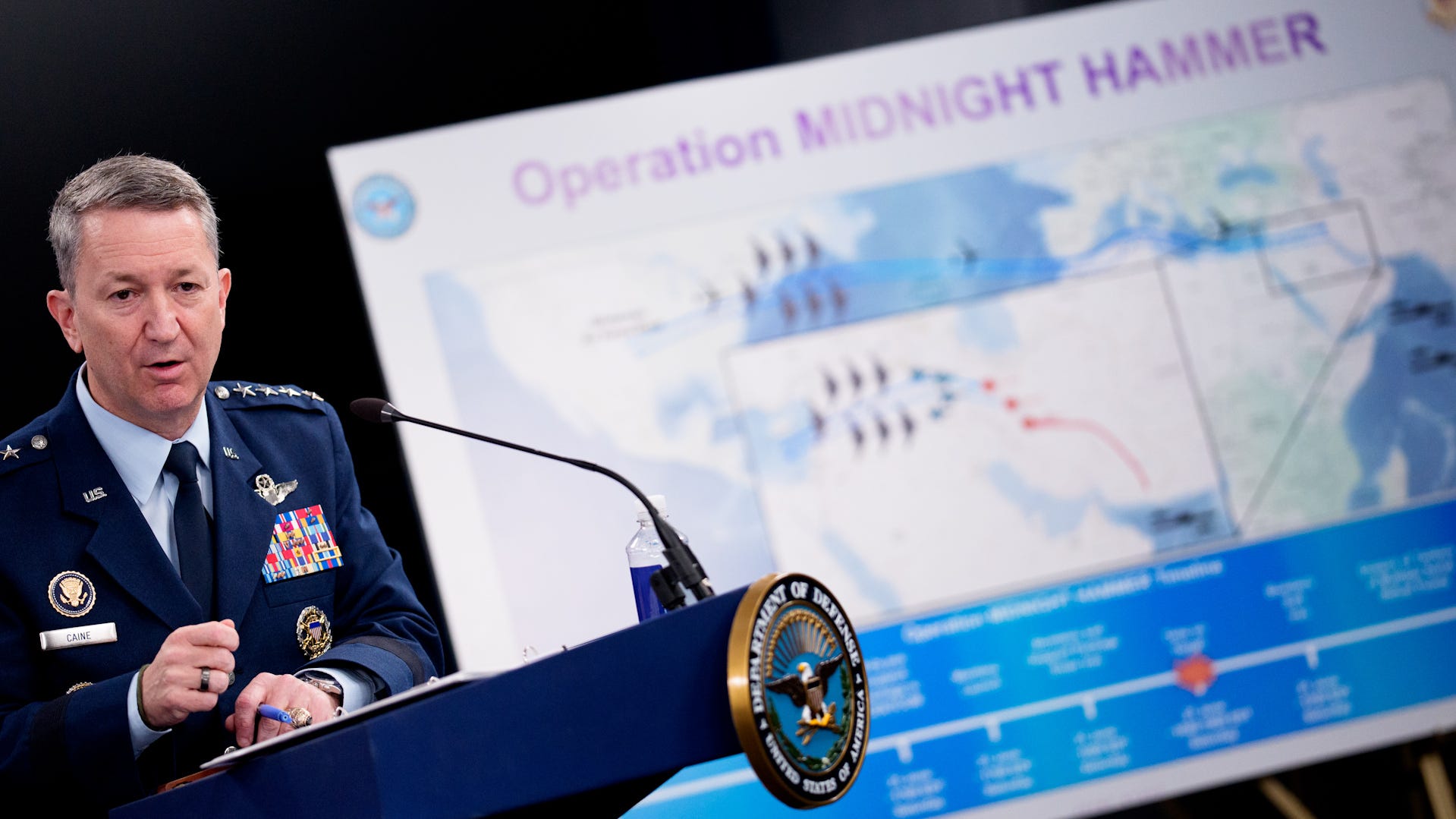What does regime change mean? Trump comments on Iran leadership

Hours after the United States military bombed three Iranian nuclear sites on June 21, President Donald Trump floated the possibility of a regime change in Iran.
“It’s not politically correct to use the term, 'Regime Change,' but if the current Iranian Regime is unable to MAKE IRAN GREAT AGAIN, why wouldn’t there be a Regime change??? MIGA!!!,” Trump wrote in a Truth Social post on June 22.
Trump's post also came on the heels of Vice President JD Vance and Secretary of State Marco Rubio each saying on June 22 that regime change in Iran was not the United States' objective.
"We don't want a regime change," Vance told NBC's Meet the Press. "We want to end the nuclear program, and then we want to talk to the Iranians about a long-term settlement here."
Rubio echoed the sentiment on CBS's Face the Nation, saying, "in this particular case, what we are focused on is not the changing of the regime.”
Here's what to know about the term "regime change" and why it's a point of focus after U.S. airstrikes on Iran nuclear facilities.
What is a regime change?
Regime change refers to the replacement of a nation's leadership, dictionary definitions agree. In the context of foreign affairs, the phrase can refer to an external party taking action or using military force to complete the change.
According to Britannica, the phrase refers to the "overthrow of a government considered illegitimate by an external force and its replacement with a new government according to the ideas or interests promoted by that force."
The Global Nonviolent Action Database at Swarthmore College notes that some scenarios exist where a leader steps aside but "continues to rule from behind the scenes" or the oligarchy that backed the leader remains intact.
Where the United States is concerned, the government has been involved in several notable regime changes throughout history.
For example, in the Iraq War, the U.S. overthrew the regime of Saddam Hussein just three weeks after military forces entered Iraq, per the Defense Technical Information Center. On April 9, 2003, U.S. forces pulled down a statue of Hussein in Baghdad's Firdos Square, symbolizing the end of his reign. The war continued for eight years after that.
What has Trump said about a regime change in Iran?
Trump said on June 21 the U.S. strikes were intended to “stop to the nuclear threat posed by the world's No. 1 state sponsor of terror."
Days before, though, Trump threatened Iran's Supreme Leader Ayatollah Ali Khamenei, writing on Truth Social, "UNCONDITIONAL SURRENDER!"
"We know exactly where the so-called 'Supreme Leader' is hiding," he said in another June 17 post. "He is an easy target, but is safe there - We are not going to take him out (kill!), at least not for now."
"Our patience is wearing thin," he added.
After the U.S. carried out airstrikes on three Iranian nuclear sites on June 21, Trump took to Truth Social the following day to signal his openness to new leadership in Iran, breaking from comments made by his vice president and secretary of state earlier that day.
“It’s not politically correct to use the term, “Regime Change,” but if the current Iranian Regime is unable to MAKE IRAN GREAT AGAIN, why wouldn’t there be a Regime change??? MIGA!!!,” Trump wrote.
Melina Khan is a national trending reporter for Paste BN. She can be reached at melina.khan@usatoday.com.